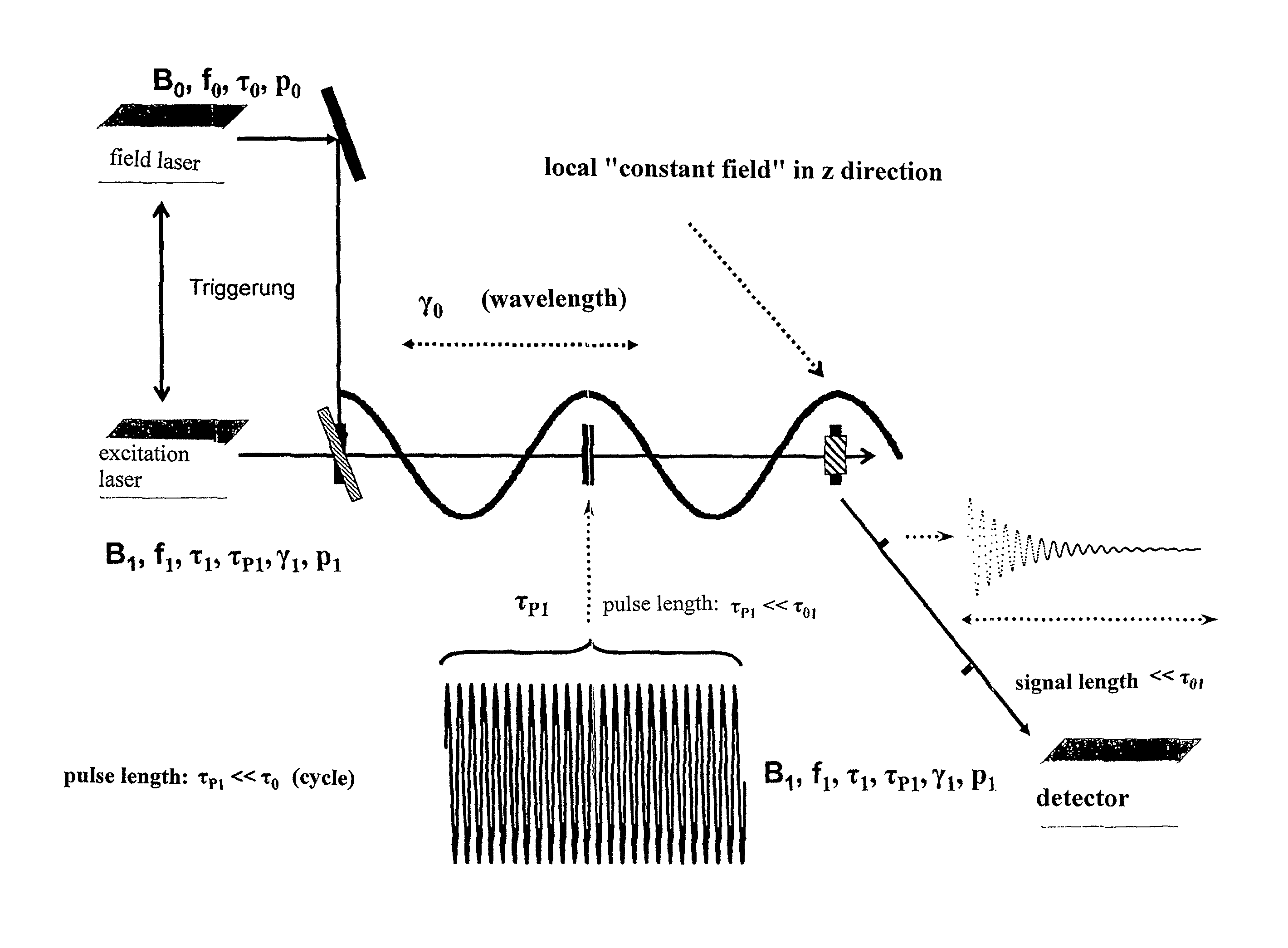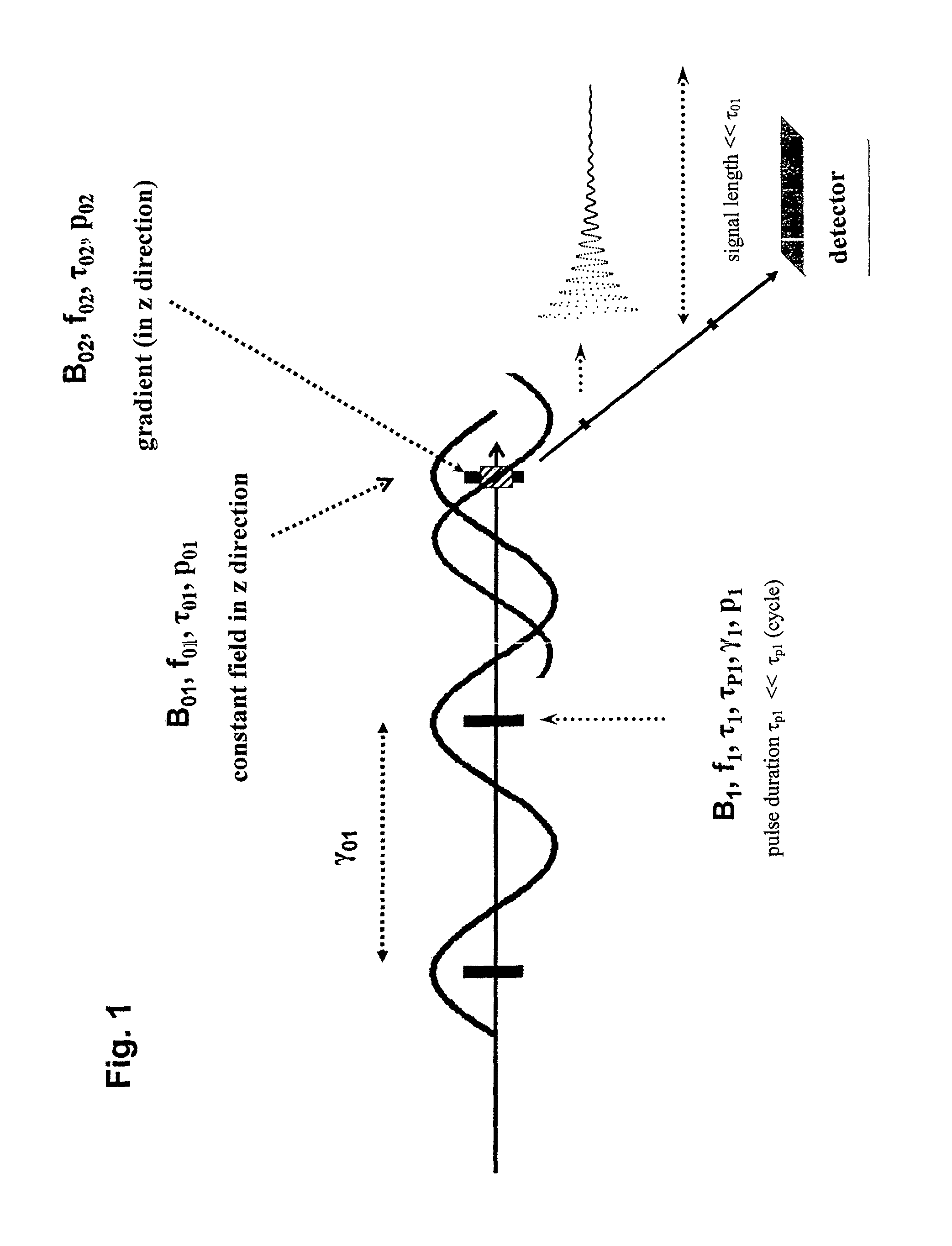Method for examining the nuclear magnetic resonance in a sample and device for carrying out the method
a nuclear magnetic resonance and sample technology, applied in the field of method for examining the nuclear magnetic resonance in a sample and the device for carrying out the method, to achieve the effect of high resolution
- Summary
- Abstract
- Description
- Claims
- Application Information
AI Technical Summary
Benefits of technology
Problems solved by technology
Method used
Image
Examples
Embodiment Construction
[0046]The principle of the invention when using the measure i) is shown schematically in FIG. 1. The first laser beam with a frequency f01, a cycle duration τ01, and a wavelength γ01 irradiates the measuring volume. As a result, a quasi-static magnetic field with a flux density B01 forms in z direction across the measuring volume on the time scale for the laser pulses, mentioned below.
[0047]Furthermore, in FIG. 1 an additional laser beam with a frequency f02, a cycle duration τ02 and a wavelength γ02 irradiates the measuring volume in the direction of the first laser beam, thereby causing an additional magnetic field with a flux density B02 to form in z direction across the measuring volume on the time scale for the laser pulses. With respect to its phase, the second laser beam is offset relative to the first laser beam in such a way that a quasi-static zero crossing of the magnetic field B02 occurs as precisely as possible in the center of the sample and / or at the location for the ...
PUM
 Login to View More
Login to View More Abstract
Description
Claims
Application Information
 Login to View More
Login to View More - R&D
- Intellectual Property
- Life Sciences
- Materials
- Tech Scout
- Unparalleled Data Quality
- Higher Quality Content
- 60% Fewer Hallucinations
Browse by: Latest US Patents, China's latest patents, Technical Efficacy Thesaurus, Application Domain, Technology Topic, Popular Technical Reports.
© 2025 PatSnap. All rights reserved.Legal|Privacy policy|Modern Slavery Act Transparency Statement|Sitemap|About US| Contact US: help@patsnap.com



